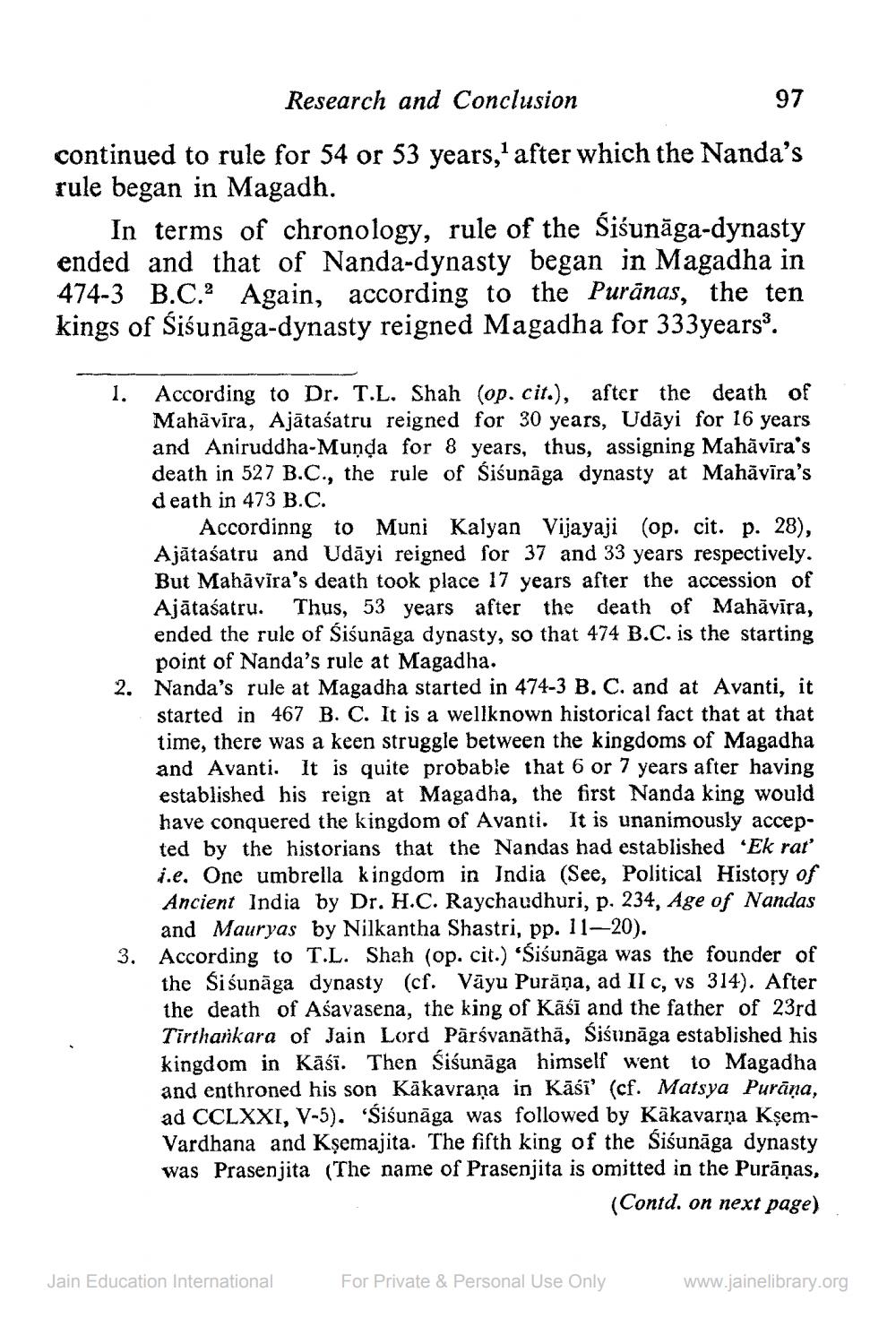________________
Research and Conclusion
97
continued to rule for 54 or 53 years,' after which the Nanda's rule began in Magadh.
In terms of chronology, rule of the Siśunāga-dynasty ended and that of Nanda-dynasty began in Magadha in 474-3 B.C. Again, according to the Purānas, the ten kings of Siśunāga-dynasty reigned Magadha for 333years.
1. According to Dr. T.L. Shah (op. cit.), after the death of
Mahāvīra, Ajātaśatru reigned for 30 years, Udāyi for 16 years and Aniruddha-Munda for 8 years, thus, assigning Mahāvīra's death in 527 B.C., the rule of Siśunāga dynasty at Mahāvīra's death in 473 B.C.
Accordinng to Muni Kalyan Vijayaji (op. cit. p. 28), Ajātaśatru and Udāyi reigned for 37 and 33 years respectively. But Mahāvīra's death took place 17 years after the accession of Ajātaśatru. Thus, 53 years after the death of Mahāvīra, ended the rule of Sisunāga dynasty, so that 474 B.C. is the starting
point of Nanda's rule at Magadha. 2. Nanda's rule at Magadha started in 474-3 B. C. and at Avanti, it
started in 467 B. C. It is a wellknown historical fact that at that time, there was a keen struggle between the kingdoms of Magadha and Avanti. It is quite probable that 6 or 7 years after having established his reign at Magadha, the first Nanda king would have conquered the kingdom of Ayanti. It is unanimously accepted by the historians that the Nandas had established 'Ek rat j.e. One umbrella kingdom in India (See, Political History of Ancient India by Dr. H.C. Raychaudhuri, p. 234, Age of Nandas
and Mauryas by Nilkantha Shastri, pp. 11-20). 3. According to T.L. Shah (op. cit.) 'Siśunāga was the founder of
the Si sunāga dynasty (cf. Väyu Purāņa, ad II C, VS 314). After the death of Asavasena, the king of Kāśī and the father of 23rd Tirtharkara of Jain Lord Pārsvanäthä, Sisunāga established his kingdom in Kāśi. Then Siśunāga himself went to Magadha and enthroned his son Kakavrana in Kāśi' (cf. Matsya Purāna, ad CCLXXI, V-5). 'Siśunāga was followed by Käkavarna KşemVardhana and Kșemajita. The fifth king of the Siśunāga dynasty was Prasenjita (The name of Prasenjita is omitted in the Purāņas,
(Contd. on next page)
Jain Education International
For Private & Personal Use Only
www.jainelibrary.org




